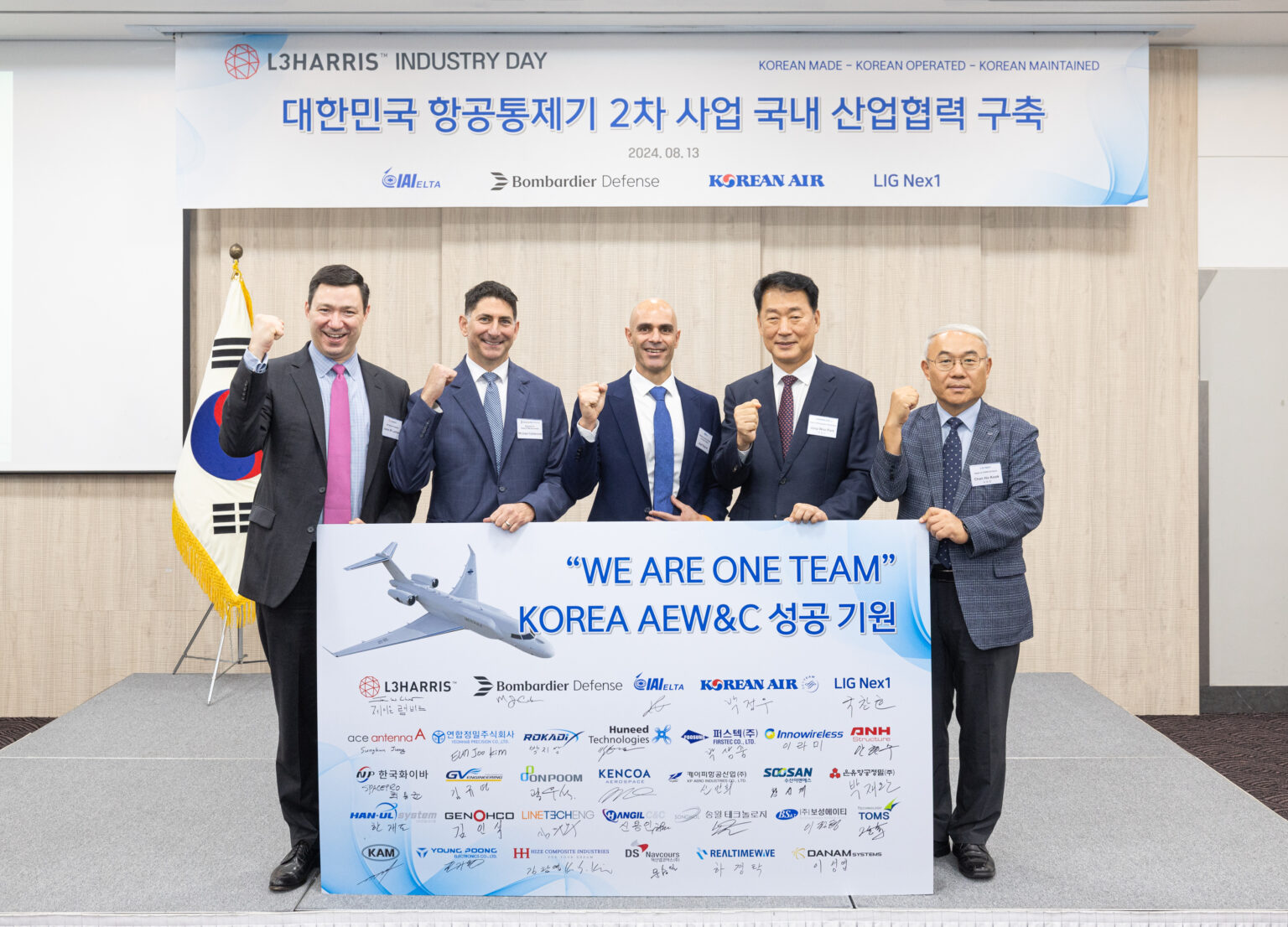Korean Air and L3Harris promote advanced AEW&C platform for South Korean Air Force
Through its aerospace division, Korean Air has partnered with L3Harris to offer a new airborne early warning and control (AEW&C) solution to the Republic of Korea Air Force (ROKAF).
Business Korea reported that on August 14, Korean Air had organized an «L3 Industry Day» at the Air Force Hotel in Yeongdeungpo-gu (Seoul) to discuss these critical matters.
Currently, the ROKAF operates four Boeing E-7A AEW&C aircrafts, but in the face of growing geopolitical tensions and North Korea’s increasing belligerent rhetoric, Seoul seeks to increase this capability. To this end, the Defense Acquisition Program Administration (DAPA) is leading the Airborne Early Warning Program-II, which, with a budget of 2.9 trillion won (over USD 2 billion), aims to purchase more early warning aircraft through an international tender.
The AEW&C solution is based on a combat-proven L3Harris platform design that utilizes Bombardier’s Global 6500, a leading high-altitude business jet. It includes the integration of advanced radar technology and artificial intelligence algorithms from IAI/ELTA (developed for the CAEW system based on a Gulfstream G550 aircraft), providing an extremely advanced airborne battle management platform. The Global 6500 is a modern aircraft that will fly higher, faster, longer, and with lower acquisition, operation, and maintenance costs than existing AEW&C platforms.
Korean participation in the new AEW&C project
L3Harris stated that the team defined this program from the outset with the goal of moving to a largely Korean industry-led program after delivery of the prototype aircraft. The first two aircraft will receive structural modifications in Texas before moving to an ELTA facility in Israel for integration and radar testing.
If selected by DAPA, Korean Air will provide engineering and will lead in-country modification and test activities for aircraft three and four. Korean Air will also manage in-country maintenance of the program. This collaboration seeks to strengthen the South Korean defense industry through technology transfer and participation in the global supply chain.

Through L3Harris’ agreements with Korean Air, LIG Nex1 and Ace Antenna, and ongoing discussions with other Korean partners, the team intends for the aircraft and mission system equipment to be fully supported in Korea. Maintenance, obsolescence management and integration of future capability enhancements will be handled by Korean industry, with support from the L3Harris team.
The acquisition and operation costs, presumably lower than those of the AEW&C solution based on the Boeing E-7A AEW&C, will surely be a strong argument to be considered by DAPA, which could acquire more planes for the same budget, or keep more aircrafts in the air 24hs in case of need, guaranteeing a spotless surveillance. But the convenience of maintaining and reinforcing a logistics chain already incorporated with the ROKAF E-7A fleet, and the added synergies and interoperability of using essentially the same platform selected by the USAF, South Korea’s most important strategic ally, is not negligible either.

/https://aviacionlinecdn.eleco.com.ar/media/2024/08/AEWC-Corea-L3Harris-Korean-Air.jpg)
Para comentar, debés estar registradoPor favor, iniciá sesión